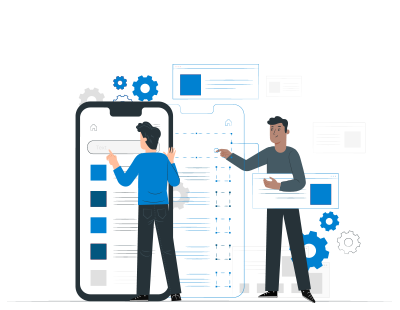Essential Features that your Contract Management Software must have
 As agreed by all the contract managers, managing contracts is a highly complex task that is prone to errors related to omission, duplication, inconsistency and so on. Contracts go through several teams and any negligence can prove to be harmful. If they are managed poorly, they can create legal and regulatory troubles that reduce compliance, increases supply chain risks, damages supplier relationships and hampers productivity and significantly decrease annual revenues.
As agreed by all the contract managers, managing contracts is a highly complex task that is prone to errors related to omission, duplication, inconsistency and so on. Contracts go through several teams and any negligence can prove to be harmful. If they are managed poorly, they can create legal and regulatory troubles that reduce compliance, increases supply chain risks, damages supplier relationships and hampers productivity and significantly decrease annual revenues.
Though most of the companies, know this, still they deploy the tools and technologies which are truly needed by this function. Most of the companies manage their contracts without a centralized repository, with contracts stored across scattered systems where expiration and renewal dates, compliance are all very hard to track, resulting in delays, cost inclination, and vulnerable supply chains.
So, to overcome all of these things, companies require a powerful contract lifecycle management software.
The complete process of contract creation and management can be simplified by using a contract data management system right from initiation to renewal. It allows stakeholders to easily view, ensures real-time availability of reports, monitors contracts, and supplier performance, enhances compliance, improves accuracy and so one.
Intelligent Automation
 Contracts have various non-value adding tasks that are very time-consuming. An AI-powered intelligent contract management software can fix this by easily enforcing standardization and automatically forward approval documents to specific teams. It sends out automated alerts of key dates to avoid missing out on deadlines, compiles documents managed by different teams into a single platform, and lowers processing and operating costs of contracts.
Contracts have various non-value adding tasks that are very time-consuming. An AI-powered intelligent contract management software can fix this by easily enforcing standardization and automatically forward approval documents to specific teams. It sends out automated alerts of key dates to avoid missing out on deadlines, compiles documents managed by different teams into a single platform, and lowers processing and operating costs of contracts.
Unified and Integrated Software
Independent contract management tools have been unsuccessful in making conversations among themselves so the risk and inconsistency are higher along with a costly creation and negotiation process. An integrated software maintains seamless coordination between several source-to-pay processes, drawing in several benefits. In an integrated software. a contract template can be automatically populated from POs or sourcing events.
Intuitive Tools
 Intuitive tools are highly required for efficient contract authoring, negotiation, tracking, and storage. they are capable of quickly detecting which of the contacts are doing well, and which ones require attention. The market-leading contract risk management tools can identify the risks associated with contracts and configure risk benchmarks. They can trigger exception approvals on their own for high-risk contracts.
Intuitive tools are highly required for efficient contract authoring, negotiation, tracking, and storage. they are capable of quickly detecting which of the contacts are doing well, and which ones require attention. The market-leading contract risk management tools can identify the risks associated with contracts and configure risk benchmarks. They can trigger exception approvals on their own for high-risk contracts.
Centralized Repository
When all the contracts and documents are stored in a single place and can be easily viewed, edited and shared by all the parties within that system, it improves visibility, transparency and also helps parties to interact and negotiate within a single system that manages the documents securely and competently.
Customizable Contract Creation Template
 A streamlined and authoring process is ensured by a highly customizable contract creation template. These templates can be altered according to the user, type of contract and supplier. Users can create them from scratch, and also recycle and modify the old ones from an archive. A prominent contract management software shall definitely support the creation of various contract types, involving buy-side, sell-side, non-commercial, administrative, NDAs, trade agreements, etc.
A streamlined and authoring process is ensured by a highly customizable contract creation template. These templates can be altered according to the user, type of contract and supplier. Users can create them from scratch, and also recycle and modify the old ones from an archive. A prominent contract management software shall definitely support the creation of various contract types, involving buy-side, sell-side, non-commercial, administrative, NDAs, trade agreements, etc.
Buyer-side and seller-side functionality
 Most of the software offer only the buyer side contract management functionality, but the most advanced ones have both the buy-side and sell-side functionality. This feature hugely benefits companies with a complex supply chain that involves recurring renegotiations, as well those with a focus on cost reduction, risk avoidance and compliance for greater RoI.
Most of the software offer only the buyer side contract management functionality, but the most advanced ones have both the buy-side and sell-side functionality. This feature hugely benefits companies with a complex supply chain that involves recurring renegotiations, as well those with a focus on cost reduction, risk avoidance and compliance for greater RoI.
Customizable approval Workflow
You should ensure that your software must have highly configurable drag-and-drop contract management workflow builders to allow users to customize the review and approval routing and also offer support for escalations, reminders and out-of-office forwarding. It should have a prioritization setting for helping users to create special workflows for high-risk contracts. Several solutions support both sequential and parallel approval cycles along with stage-specific workflow steps. Some also offer one or more in-house or partner supplier electronic signing features for finalizing documents.
Editing and Revision Tracking Functionality
 After a contract is made, it is usually sent for administrative and legal reviews. The editing and reviewing functions help users to leave comments, request alterations, compare versions and partially reject or approve contracts. With a word processing tool, version tracking with redlining tools shows comparisons and even records all revisions by time and author.
After a contract is made, it is usually sent for administrative and legal reviews. The editing and reviewing functions help users to leave comments, request alterations, compare versions and partially reject or approve contracts. With a word processing tool, version tracking with redlining tools shows comparisons and even records all revisions by time and author.
3 Steps To Better Procurement
How These 3 Core Strategies Determine The Outcome of Your Procurement Process
Request A Demo



